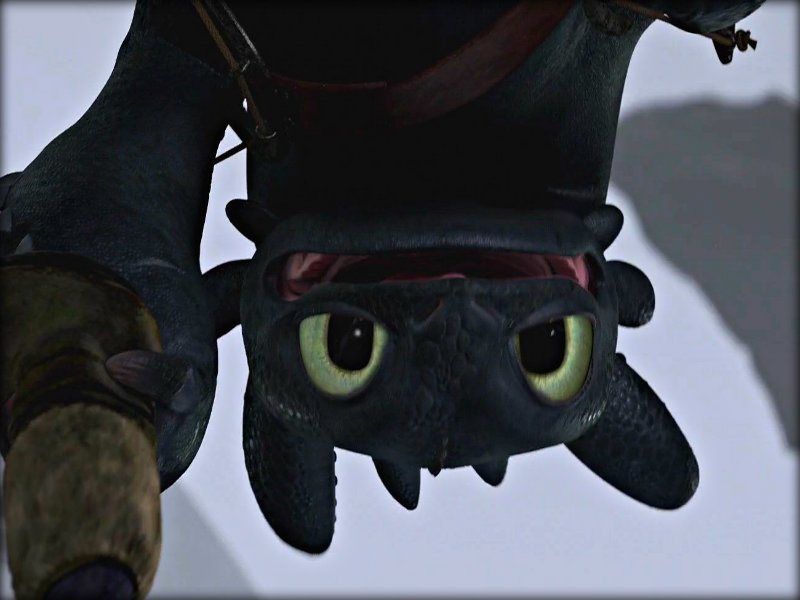
- #12 INCH TOOTHLESS DRAGON SPRING LOADED WINGS SOFTWARE#
- #12 INCH TOOTHLESS DRAGON SPRING LOADED WINGS PLUS#
- #12 INCH TOOTHLESS DRAGON SPRING LOADED WINGS FREE#
Next time around I’m going to try matching the frame rates to see if that helps.
#12 INCH TOOTHLESS DRAGON SPRING LOADED WINGS PLUS#
I think that’s because the differing frame rates for screen video on the one hand, and motion video plus audio on the other, make it hard to keep things in synch. Unfortunately it came out a few seconds longer than expected. When you export, Camtasia renders the audio based on your edits. Instead I edited everything down in Camtasia, then tried to do an export/process/import pass on the audio. What I should have done is grab the sound track out of the captured motion video, run Audition’s noise reducer, recombine the audio and video, and then import into Camtasia for editing. In practice, I would prefer to do that in Adobe Audition, which does the job faster and better. In principle you can, for example, run a noise-reduction pass on your audio in Camtasia. I made things hard on myself because I’d forgotten that Camtasia invites you to do more integrated editing than you should. And you don’t really want to split the PIP video into segments because then you can’t manipulate the whole track.Įditing audio, motion video, and screen video all together Note that you can vary the size and location of the PIP window by splitting the PIP video into segments and assigning different sizes and locations to each segment. Often I guessed wrong, and had to recompose and reshoot a piece of screen action. Lacking a visual cue for the PIP window’s borders, I had to guess. To avoid that, you have to compose the screen around the PIP window. But sometimes you don’t want it to hide an essential part of the screen. Often it’s OK to let the PIP video just overlay the screen action. This leads to my first feature request for Camtasia 8: a PIP preview rectangle when recording the screen. For a given segment of PIP video, the window stays where you put it. I’d sssumed you could move the PIP window around, and grow it or shrink it, to accomodate different kinds of underlying screencast action. I made the PIP window a quarter the size of, vertically centered in, and flush right with the larger 1024×768 video window. On import you tell Camtasia how big your PIP window will be, and where it will show up in the larger video window. So I recorded to tape, imported the results to a file, and imported that file into Camtasia as a PIP (picture-in-picture) video. It can record directly from a camcorder, but my second-hand Panasonic PV-GS400 doesn’t seem to work well in that mode. I was happy for all the help I could get.įor this screencast, I upgraded from Camtasia 5 to Camtasia 7.
#12 INCH TOOTHLESS DRAGON SPRING LOADED WINGS SOFTWARE#
Reading from a software teleprompter is hard, at least for me. PromptDog’s mouse-wheel-driven variable speed control made it much easier to stay in the focal zone.

But for me, at least, the stops and starts were distracting.

With most of the programs I tried, you manage this focal zone by stopping and starting the scroll.

That’s because words and sentences take varying amounts of time to speak, but you need to keep your eyes focused near the top of the screen where the camera sits. No matter what scroll speed you choose, you need to vary it as you go along. If you’ve read from a software-based teleprompter before, you’ll already know this, but it was new to me. It does everything well, but what really put it over the top for me was the way it wires scroll speed to the mouse wheel.
#12 INCH TOOTHLESS DRAGON SPRING LOADED WINGS FREE#
Finally I settled on PromptDog, which is free to try but is the one I’ll buy when I go this route again. All failed in some dimension of control: margins, speed, transport. I tried CuePrompter, TeleKast, and many others. But I had to work through a bunch of them before I found one that worked well for me. You’d expect to find lots of software prompters floating around on the web, including some free ones, and you’d be right about that. The process has been challenging, and I want to write about it while the details are fresh.Īfter writing the script, I realized I’d need a teleprompter in order to read it effectively into the camera. This is the first screencast I’ve worked on in ages, and also the first in which I appear as a picture-in-picture talking head. It’ll stand in for me at an upcoming event I can’t attend, and serve as an explanation I can point others too. I’m just wrapped up a screencast about the elmcity project.


 0 kommentar(er)
0 kommentar(er)
